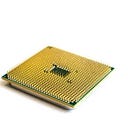Recycling in the Semiconductor Industry
Overview:
Semiconductor chips are so integral in today’s modern devices, that without them, technological development will halt. Semiconductors are the driving force in many industries. These chips are used in almost every device we see around us. Although in recent times, many semiconductor research reports have mentioned that the waste from the semiconductor industry has been affecting the global ecosystem to an extent. Huge amount of waste is generated in semiconductor manufacturing. This has concerned many environmental experts, as the situation will get worse if immediate actions are not taken. Some big semiconductor companies such as Intel have started recycling its semiconductor materials.
Environmental risks posed by the semiconductor industry:
A typical facility producing semiconductors on six-inch wafers reportedly uses not only 240,000 kilowatt hours of electricity but also over 2 million gallons of water every day. Contamination has also been an issue in areas surrounding fabrication plants. Drinking water was found to be contaminated with trichloroethylene and Freon, toxins commonly used in the semiconductor industry. Another area of concern is the eventual fate of discarded electronic systems such as computers, pagers, mobile phones, and televisions that contain semiconductor devices. As more and more semiconductors are used in the world, the threat to the environment is also increasing. Hence, various companies have started to recycle semiconductor materials, in order to control the waste, and also to save some cost.
Recycling the semiconductor materials:
Recycling semiconductor materials is not as easy as recycling paper or plastic. As semiconductor materials contain harmful chemicals, it’s recycling becomes even more tougher. In recent times, Intel has successfully achieved semiconductor material recycling. Intel’s industrial campus in Leixlip, Ireland is one of the most advanced in Europe. This site, which currently manufactures semiconductor products based on Intel’s 14nm process node, has made tremendous progress in managing their manufacturing waste over the past several years.
There are also some doubts over using recycled semiconductor materials, as it may contain cadmium telluride, a toxic substance. Although new techniques are developed by industry, to tackle this problem and provide an effective recycling technology. All stages of the silicon cell life cycle contribute to the Global Warming Potential (GWP) and greenhouse gas emissions reductions through the use of recycled silicon material represented 42%. The total environmental impact of photovoltaic production can be reduced by as much as 58%, mainly through reduced energy consumption in the production process of high purity crystalline silicon. Hence, it is necessary that the semiconductor industry works together in order to prevent any further consequences of semiconductor materials harming the environment.
